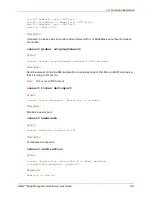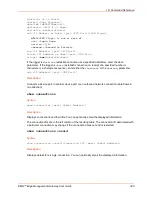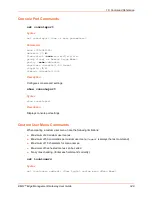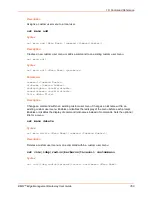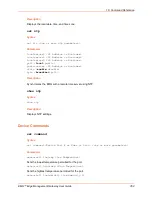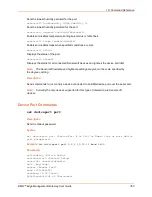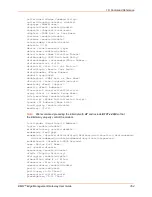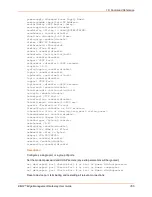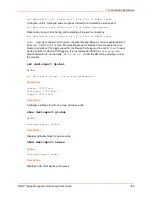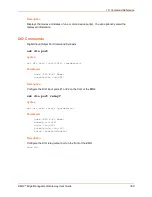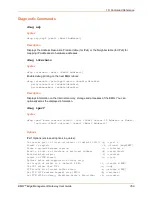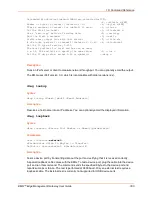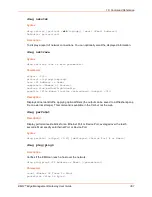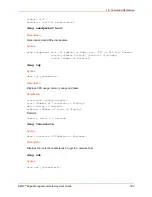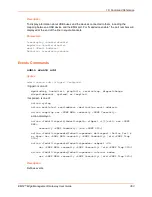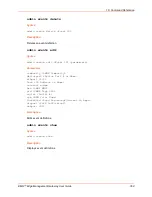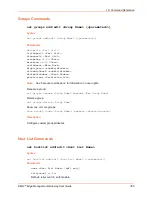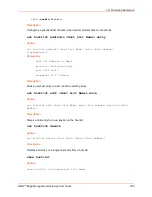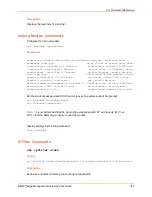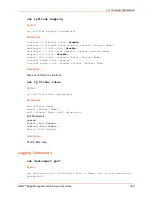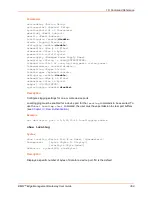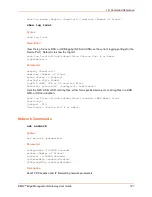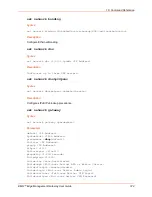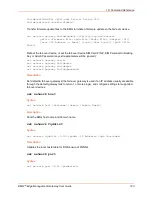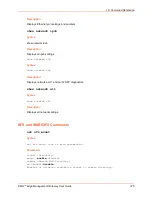
16: Command Reference
EMG™ Edge Management Gateway User Guide
360
Set bandwith to n bits/sec (default 1Mbit/sec,unlimited for TCP);
-b, --bitrate n[KMG]
Number of bytes to transmit (instead of -t): -n, --bytes n[KMG]
Time in seconds to transmit for (default 10 secs): -t, --time n
Set the IPv6 flow label: -L, --flowlabel n
Use a 'zero copy' method of sending data: -Z, --zerocopy
Omit the first n seconds: -O, --omit n
Prefix every output line with this string: -T, --title str
# of blocks (packets) to transmit (instead of -t/-n): -k, --blockcount
Set the IP type of service, 0-255.
The usual prefixes for octal and hex can be used,
i.e. 52, 064 and 0x34 all specify the same value: -S, --tos n
Set the IP dscp value, either 0-63 or symbolic: --dscp n
Description
Runs an iPerf server or client to measure network throughput. You can optionally email the output.
The EMG uses iPerf version 3.X, which is incompatible with older versions (2.x).
diag lookup
Syntax
diag lookup <Name> [email <Email Address>]
Description
Resolves a host name into an IP address. You can optionally email the displayed information.
diag loopback
Syntax
diag loopback <Device Port Number or Name>[<parameters>]
Parameters
test <internal|
external
>
xferdatasize
<
Size In Kbytes to Transfer>
Defaults: test=external, xferdatasize=1K
Description
Tests a device port by transmitting data out the port and verifying that it is received correctly.
A special loopback cable comes with the EMG. To test a device port, plug the cable into the device
port and run this command. The command sends the specified Kbytes to the device port and
reports success or failure. The test is performed at 9600 baud. Only an external test requires a
loopback cable. The External test is currently not supported for USB device ports.


